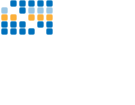Pixel (részlet) (Hungarian)
A Föld nevű bolygó találomra kiválasztott pontján tartózkodom emberi testben. Tekintetem végigfut a végtelen, sárga porral borított parton. Nyitott szememben tágas, vibráló vízfelület tükröződik. Fel kell jegyezni mindent.
Talpam alatt süppedő talaj, felettem csillagtalan égbolt. Hajnalra a homoknak nevezett sárga por kihűlt, de mire a lények kirajzanak a fényre, ismét felmelegszik. Suta mozgással haladnak át látóteremen, többnyire a tengerhez igyekeznek. Nagy utat megtesznek fémpáncéljaikban a partig, de ha elérték a vizet, néhány különös, hadonászó mozdulat után kijönnek belőle, és sietve letörlik magukról.
Ide-oda mozgásukat életnek nevezik: a hangokkal és gesztusokkal kísért cikázás jelentéktelen ideig tart. Többnyire ugyanazt ismételgetik: futnak, sírnak, cipekednek, emlegetik és mérik az Időt, testükön mutogatják múlását, a testet meg hol kitakarják, hol elfedik. Egymást nem értik, sorsukról mit se tudnak, istenítik és félik a Véletlent. Az emberlények az időt csak visszafelé olvassák, előrefelé soha. Estére bedobozolják magukat, testüket kitakarják, a vizet fémcsövekből fröcskölik bőrükre, majd megint sietve letörlik. A szertartást naponta megismétlik, valószínűleg az áttetsző Vizet is istenítik, akár a számukra megfoghatatlan Véletlent és Időt.
Amikor cikázásuk véget ér, testüket a föld alá teszik. Ilyenkor nem ugyanabba a fémpáncélba csomagolják magukat, amiben újtaikon mozognak, hanem egy másikba: ez utóbbi fából készül. Fémpáncéljukat soha nem rakják a föld alá. Ha ép, attól fogva másik egyed hordja, időnként egymást közt is cserélgetik. A partra viszont páncél nélkül jönnek, puha testüket kitakarják. Általában mozdulatlanul fekszenek a fényben. Vélhetően a barna homokhoz hasonlatos rejtőszínt kívánják elérni, ennek viszont ellentmondanak a rajtuk látható élénk textildarabok. Megmagyarázhatatlanul hosszú ideig dermednek így, talán valamiféle kozmikus sugárzást próbálnak felfogni. Nyilván ezt a célt szolgálják a föléjük terjesztett különféle mintázatú ernyők is. Némelyek beszéd helyett gömb alakú tárgyakkal kommunikálnak, a dobások ritmusa változó. Ha nagy, gömb alakú tárgy feléjük száll, hajlonganak előtte, a még kicsi gömböket viszont egy erre a célra készült lapos, kerek szerszámmal fenyítik. Két kifejletlen nőstény testével körkörös jeleket ír a homokba, ezek fentről valósínűleg jobban olvashatóak és az ernyők mintázatát utánozzák. Az egyik nőstény huszonhat évig fog élni, akkor összetörik a fémpáncélja és a föld alá teszik. A másik hosszabb életű lesz, de embertestét nem szereti, végül harmincévesen felvágatja és két zacskót dugnak a bőre alá. Sok nőnemű egyeddel elvégzik ezt, a zacskók bent maradnak, ezt az egyedek békésen tűrik. A zacskók célja ismeretlen. Egy fiatal nőstény épp az utódját viszi, ennek fémpáncélja még nem fejlődött ki, puha kerekes tokját nem tudja egyedül mozgatni, az anyja tolja benne. Egy másik nőstény fejére tett ernyővel szeretne fényjeleket felfogni, és kezdetleges, kézzel készítet úrhajót próbál a szélbe ereszteni, amelyet papírsárkánynak nevez. A primitív fejernyő neve kalap. Rögzítem ezt is. | Uploaded by | P. T. |
| Source of the quotation | http://bukfalo.blogspot.hu |
 |
|
Pixel (detail) (English)
I dwell on the planet known as Earth, at a point selected at random, in the form of a human body. My gaze runs across the endless shore covered with yellow dust. A spacious, vibrating surface of water is reflected into my opened eyes. I must note down everything.
Below my heel is sinking earth, above me a starless sky. By dawn, the yellow dust that is called “sand” has cooled off, but as the beings swarm out into the light, it once again grows warm. They proceed with ungainly movements across my line of vision, for the most part trying to reach the sea. They travel a long distance to the shore in their metal armors, but if they enter into the water, after a few particular flailing gestures, they come out again and hurriedly wipe it off themselves.
Their movements here and there are known as “life”: the zigzagging accompanied by sounds and gestures is maintained for an insignificant period of time. For the most part, the same actions are continually repeated: running, crying, dragging things about, the recurring mention and measuring of Time, and its passing as it is shown upon their bodies, which they alternately cover or uncover. They do not comprehend each other, they know nothing of their fate, they idealise and fear the Accidental. The human organism can only read time in a backwards direction, never forwards. In the evenings, they box themselves in, uncover their bodies, splash water from metal pipes onto their skin, and again hurriedly wipe it off. They repeat the ritual daily, thus in all probability they also idealize the transparent Water, just as the Accidental and Time, which are inconceivable to them.
When the zigzagging has come to an end, they place their bodies below the earth. At such times, they do not pack themselves into their metal armors in which they move upon the roads, but rather into a wooden container. They never place their metal armors below the earth. If it is still intact, from that point on, another organism wears it. From time to time, they exchange them between themselves. They approach the shore, however, without their armors, uncovering their soft bodies. Generally, they lie motionless in the sun. Presumably, they wish to attain a camouflage similar to the brown sands, this supposition, however, is contradicted by the vividly colored textile pieces that they wear. They lie as if congealed for inexplicably long periods of time, most likely trying to intercept some sort of cosmic ray. Clearly it is in the interests of this goal that they place above their heads the opened screens of various pattern. Some of them, instead of speech, communicate with spherical objects, with various throwing rhythms. If a large spherical object is cast above them, they bow down before it; the smaller balls, however, they beat with a flat round implement prepared specifically for this use. Two undeveloped female organisms write rounded signs into the sands, which in all probability are readable from above and imitate the patterns on the screens. One of the female organisms shall live for 26 years, then her metal armor shall break apart and she shall be placed under the earth. The second will have a longer life, but she does not love her human body, and finally at the age of thirty has it slit open while two sacks are inserted under the skin. This process is completed with many female organisms, the sacks remain inside, this is patiently tolerated by the female entities. The function of the sacks is unknown. A young female organism carries her offspring until it develops its own metal armor; in the soft wheeled case, however, it cannot move by itself, the mother pushes it. It would like to comprehend the light signals emerging from the screen placed upon the head of another undeveloped organism, and attempts to launch into the breeze a primitive handmade airship which they call “a paper kite”. The name of the primitive head-screen is a “hat”. I note this down too. | Uploaded by | P. T. |
| Source of the quotation | http://www.hlo.hu |
 |
|




